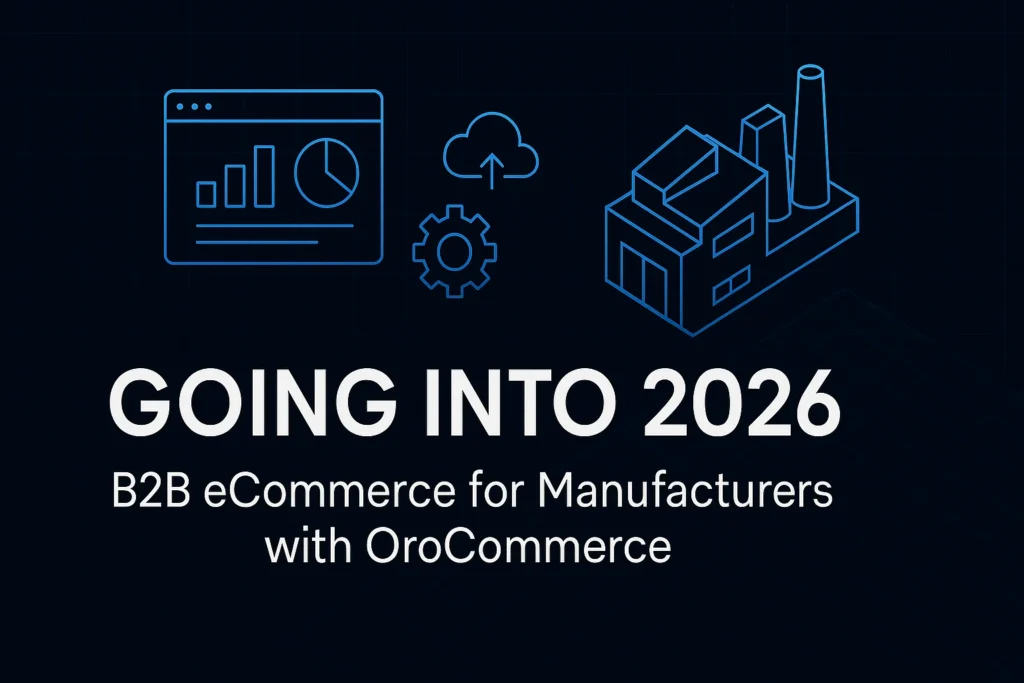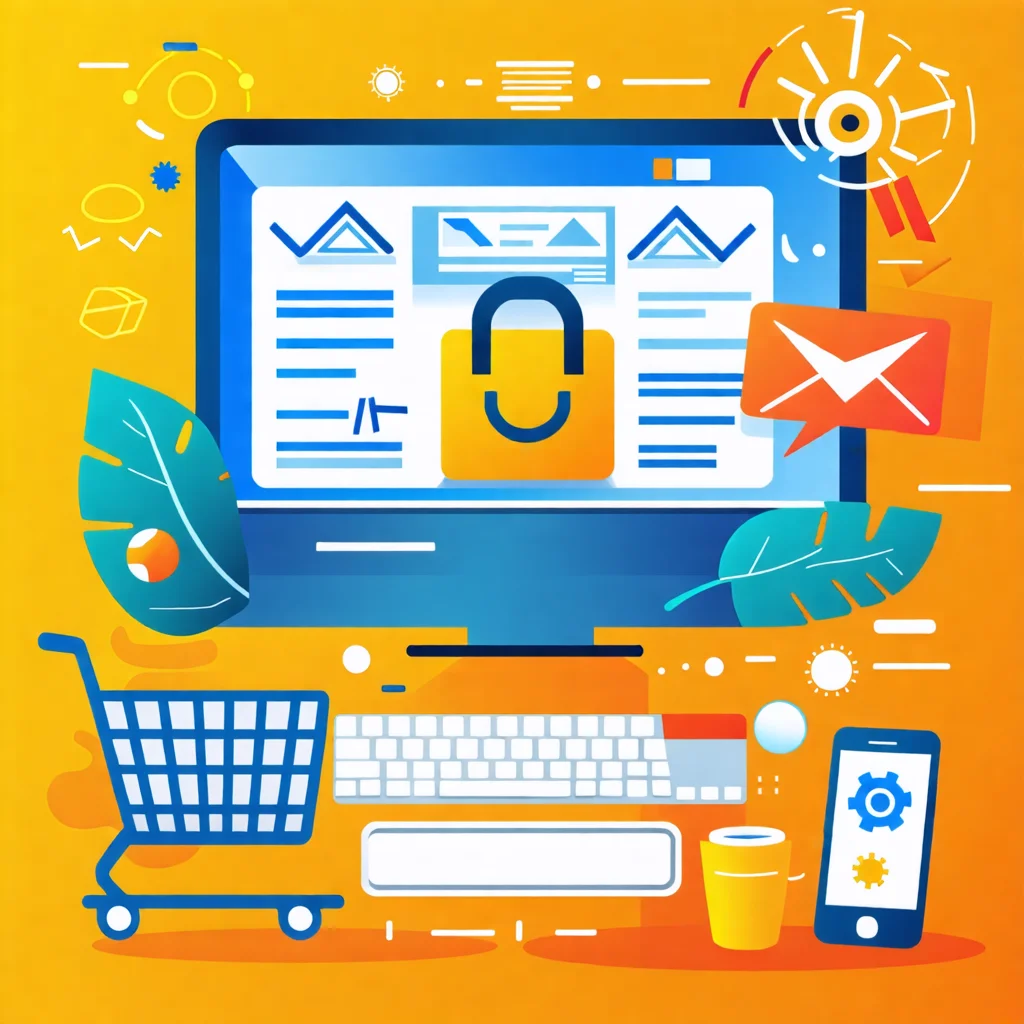
B2B eCommerce in 2025–2026: Pain Points for Manufacturers and How OroCommerce Helps
Manufacturing has long been the backbone of the global economy, but selling in this sector is no longer as straightforward as it once was. Traditional processes like trade shows, faxed orders and sales‑rep negotiations are fading fast; by mid‑2025, 73 % of B2B buyers already preferred buying online rather than through a salesperson. Global B2B eCommerce sales are projected to hit US$3.6 trillion by 2026, yet many manufacturers still struggle to transform digitally. They face complex sales cycles, fragmented data and outdated systems that make it difficult to deliver the consumer‑like experiences modern buyers expect.
In this post, we’ll look at the biggest pain points plaguing B2B manufacturers and examine how OroCommerce – the B2B‑first platform used by Metrotechs – solves these challenges.
Why B2B eCommerce Feels Different in 2025–2026
The rapid growth of digital channels is not simply B2C trends seeping into B2B. Research from the Master B2B 2025 State of eCommerce Report shows that cultural obstacles, not technology, are now the greatest hurdle to digital maturity. Many senior leaders lack digital expertise, and companies still operate in silos, making transformation difficult.
Moreover, B2B buyers have complex requirements that B2C platforms can’t handle. They need flexible quoting, less‑than‑truckload (LTL) freight logic and parent–child account hierarchies. Modern platforms must also manage negotiated pricing, location‑based ordering and integrations with ERP/CRM systems. Attempting to retrofit a B2C platform into this environment usually results in frustration and lost opportunities.
Another pain point is product discovery. Manufacturers often offer thousands of SKUs and variants, making it hard for buyers to locate the right items. The Master B2B report found 43 % of companies plan to invest in better findability. AI‑driven search is gaining ground because search visitors convert at nearly five times the rate of non‑search visitors, but implementing AI requires good data governance.
Finally, the integration headache is growing. A majority of B2B organizations are plagued by siloed systems and inconsistent data; 67 % cite system compatibility as a top challenge. As tech stacks expand, high implementation costs and limited digital skills become major roadblocks.
The Big Pain Points for B2B Manufacturers
Complex Sales Cycles and Customer Management
-
Multiple decision‑makers and lengthy approvals extend sales cycles and generate fragmented data.
-
Maintaining relationships across divisions and regions is harder in B2B than B2C.
-
Legacy CRM and manual processes hinder visibility and slow down sales.
Inventory, Supply Chain and Pricing Complexity
-
Demand is unpredictable; bulk orders and custom products lead to over‑stocking or stockouts.
-
Pricing isn’t one‑size‑fits‑all – manufacturers juggle volume‑based tiers, customer‑specific agreements and changing market rates. Manual management causes errors and lost margin.
Integration and Data Silos
-
B2B companies often rely on a maze of ERP, CRM, PIM and eCommerce systems that don’t communicate. Manual workarounds waste time and prevent real‑time visibility.
-
Achieving unified commerce means connecting data across channels, yet integration projects are expensive and require specialized skills.
Digital Transformation Resistance
-
Many manufacturers still rely on manual ordering (Excel, fax or phone) and worry that eCommerce will disrupt existing channels.
-
Tight schedules and heavy processes make it hard for teams to embrace change.
Rising Buyer Expectations
-
Modern B2B buyers are millennials who demand self‑service portals, mobile access and transparent pricing. They want to research, shop and order on their own terms and any device.
-
Without consumer‑grade experiences – real‑time inventory, one‑click reordering and personalized catalogs – buyers will switch providers.
How OroCommerce Solves These Challenges
Metrotechs leverages OroCommerce because it was built specifically for B2B. It comes with native functionality that addresses manufacturers’ pain points rather than forcing companies to bolt on expensive customizations. Here’s how OroCommerce tackles each issue.
Self‑Service and Customer Experience
-
Buyer portals: OroCommerce gives manufacturers flexible self‑service portals where customers can view order history, check invoice status and reorder products 24/7.
-
Automated re‑stocking and quote requests: The platform automates product re‑stock notifications and supports online RFQ workflows, speeding up sales and improving accuracy.
-
Multiple sales channels: Manufacturers can spin up reseller portals with contract pricing and custom catalogs, or launch D2C sites without disrupting existing distributors.
Unified Data and Integration
-
Centralized view: OroCommerce unifies data across multiple websites and customer groups, giving manufacturers a holistic view of customer behavior.
-
Integrations: It connects seamlessly with ERP, CRM and PIM systems, eliminating data silos. Integration with Sage X3 and Mollie allowed ADDEV Materials to automate order fulfillment and payment processing.
-
Workflow engine: Custom workflows automate order approvals, inventory management and customer notifications. SCHNEEBERGER used this to let customers configure complex products online and generate accurate quotes automatically, leading to a projected 20 % increase in new customer acquisition.
Pricing, Catalog and Account Complexity
-
Customer‑specific pricing: OroCommerce supports customer‑specific price lists and tiered discounts out‑of‑the‑box. This solves the problem of manual price management for volume‑based contracts.
-
Multiple catalogs: Manufacturers can organize products into catalogs targeted to industries, buyer roles or individual clients.
-
Corporate account structures: The platform handles parent–child account hierarchies and role‑based permissions, aligning with B2B needs.
Scalability and Multichannel Flexibility
-
OroCommerce is designed to handle thousands of SKUs, multiple websites and global customers. Dunlop Protective Footwear used the platform to launch 12 country‑specific websites and is onboarding its entire customer base.
-
Its headless and modular architecture allows manufacturers to expand into marketplaces or configure new channels without starting over.
Proven Results
-
Braskem case study: Braskem built a multi‑branch B2B portal (“Bridge”) with OroCommerce. By integrating with SAP and shipping systems, customers gained 24/7 access to orders, invoices and delivery information. Automation processes allowed Braskem to handle 12,000 orders per month, save 22,000+ work hours annually and boost customer satisfaction by 13 %.
-
SaltWorks: The gourmet salt supplier switched from Magento to OroCommerce, benefiting from native pricing schemes and multiple catalog management that previously required heavy customizations.
Table: Pain Points and OroCommerce Solutions
| Major pain point | Evidence from research | OroCommerce solution |
|---|---|---|
| Complex sales cycles & customer management | B2B buying involves multiple decision‑makers and lengthy approvals, leading to fragmented data and delayed cash flow. | Integrated CRM and workflows centralize customer data; self‑service portals and online RFQ processes shorten sales cycles. |
| Unpredictable inventory & supply chains | Manufacturers struggle with unpredictable order sizes and tight delivery timelines. | Automated restock notifications, real‑time inventory visibility and ERP integration improve accuracy and reduce stockouts. |
| Pricing & discount complexity | Negotiated pricing and volume tiers make manual price management error‑prone. | OroCommerce natively supports customer‑specific price lists, tiered discounts and quote‑to‑order workflows. |
| Integration & data silos | 67 % of B2B companies struggle with system compatibility and data consistency. | OroCommerce connects ERP, CRM, PIM and payment gateways, creating a unified view and eliminating silos. |
| Resistance to digital transformation | Many manufacturers rely on manual processes and fear disrupting existing channels. | Modular architecture allows phased rollouts, D2C channels without hurting distributors, and success stories demonstrate ROI (e.g., Braskem saving 22k+ work hours). |
| Rising buyer expectations & product discovery | 73 % of B2B buyers prefer online purchasing; product findability is a top investment priority. | OroCommerce offers personalized catalogs, AI‑ready search integration and mobile‑friendly self‑service portals. |
Final Thoughts
B2B eCommerce in 2025–2026 is at a tipping point. Buyers expect consumer‑grade experiences while companies wrestle with complex pricing, multi‑stakeholder approvals and outdated systems. The Master B2B report makes it clear that cultural change and leadership are now bigger barriers than technology. Manufacturers that cling to manual processes risk losing market share to more agile competitors.
Metrotechs is committed to helping manufacturers navigate this transition. We choose OroCommerce because it is purpose‑built for B2B, offering flexible workflows, deep integrations and self‑service experiences that meet modern buyer expectations. The platform’s proven results – from saving tens of thousands of work hours to supporting international expansion – show that investing in the right technology isn’t just about keeping up; it’s about positioning your manufacturing business for the future.






